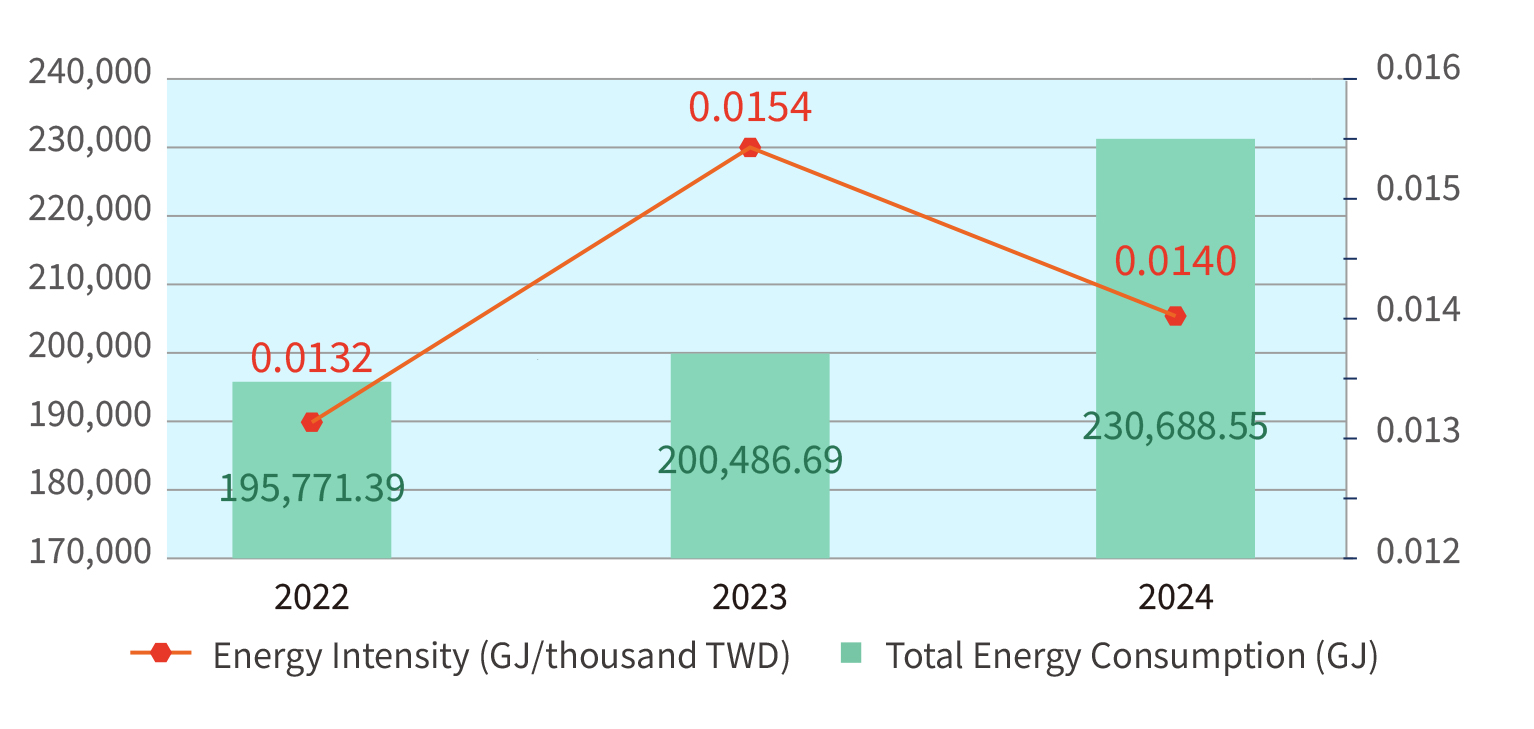FITI is committed to advancing climate change mitigation through continuous improvements in energy efficiency and carbon reduction. Beyond enhancing environmental protection measures and facility infrastructure, we have in recent years strengthened our GHG accounting and established emission reduction targets. To further minimize environmental impacts associated with production processes, we are progressively phasing out energy-intensive equipment, thereby contributing to environmental stewardship and sustainable operations.
Energy Management Policy
◎ Establish an energy management system to enhance energy use efficiency.
◎ Continuously improve energy performance and engage all employees in energy saving and carbon reduction.
◎ Comply with energy-related laws and procure energy-saving certified equipment.
◎ Formulate appropriate energy strategies to implement sustainable corporate management.
◎ Regularly review energy indicators to ensure continuous improvement in energy value.
Energy Usage
FITI primarily relies on electricity supplied by power companies and diesel used in generators for main power transmission at its facilities. Electricity is mainly consumed by production equipment and facility systems, and is managed and analyzed through the site reporting system. This system enables real-time monitoring, allowing the company to respond promptly to any abnormal electricity usage and ensure that every kilowatt-hour is used efficiently, minimizing energy waste.
Diesel is primarily used for emergency generators, which are only activated during annual maintenance or power transmission disruptions, and is not a regularly used energy source in daily operations. Natural gas is mainly used to operate the Group’s boilers, as it allows for clean combustion and serves as a replacement for more polluting fuels. We are committed to adopting cleaner energy sources as part of our efforts toward environmental sustainability.
Energy Usage in 2024
Data Sources:
1.Electricity and natural gas consumption are based on the aggregated monthly utility bills or invoices.
2.Diesel consumption is primarily based on actual usage statistics.
3.Annual revenue data are derived from consolidated financial statements, expressed in thousands of New Taiwan Dollars (TWD).
Energy Intensity by Year

Notes:
1.Energy intensity is benchmarked against the past three years, with data collection and analysis becoming more comprehensive.
2.Operating revenue figures are sourced from the Company’s annual financial reports, expressed in thousands of TWD.
3.Total group energy consumption includes electricity, diesel, and natural gas, with units in gigajoules (GJ).
4.Energy intensity is calculated as the total annual electricity consumption of the Group divided by the consolidated annual revenue.
5.From 2022 to 2024, energy intensity shows a declining trend due to capacity expansion and increased operating revenue.
Energy Saving Measures Executed in 2024
Notes:
1.The emission factor references the Taiwan Power Company's announcement for the year, which is 0.474 kg CO2e per kWh..
2.The annual average electricity savings rate is based on information reported through the Energy Audit Network..
3.The average electricity savings rate from 2015 to 2024 is 1.75%, which surpasses Taiwan's energy regulation requirement of 1%.